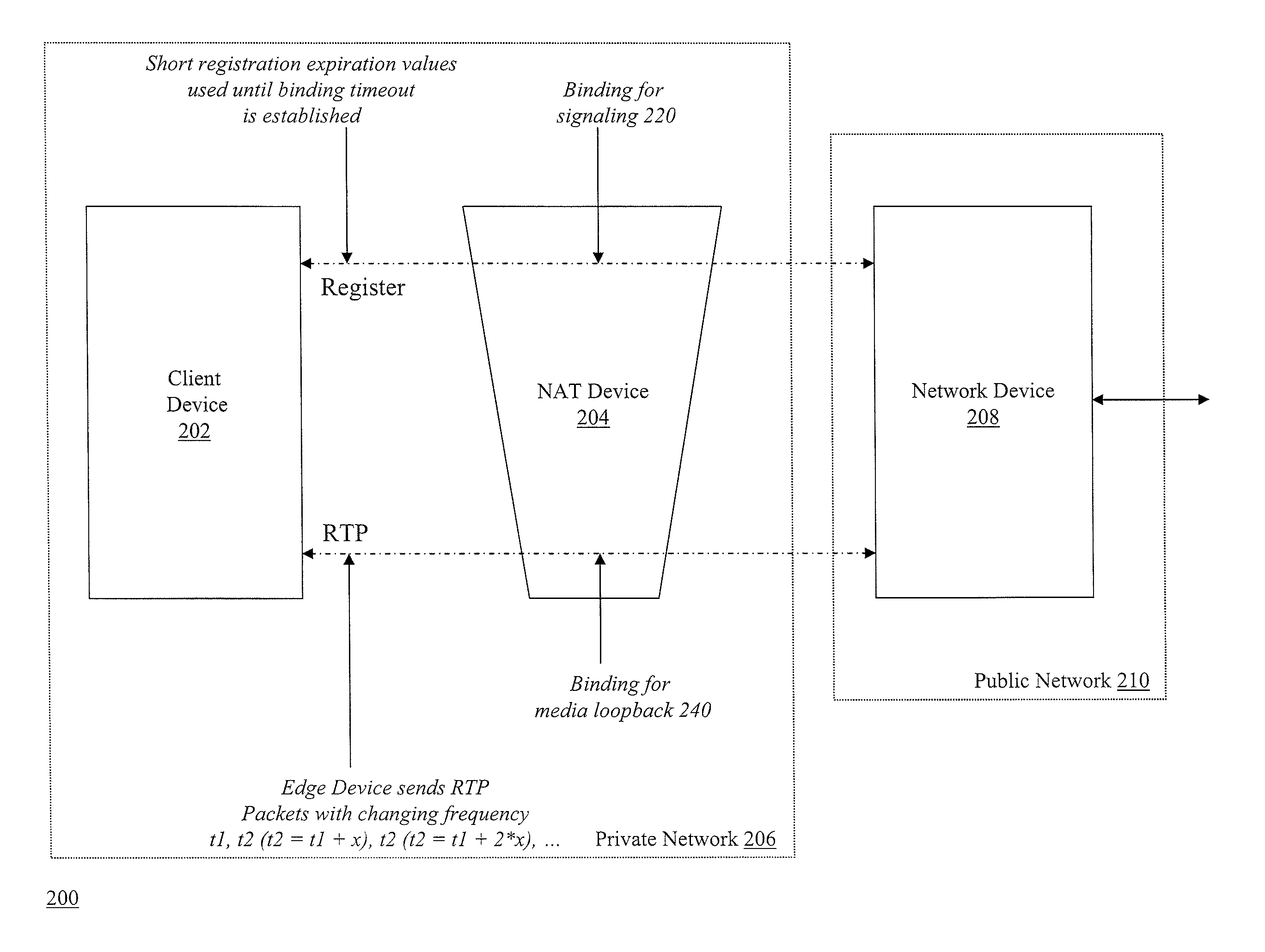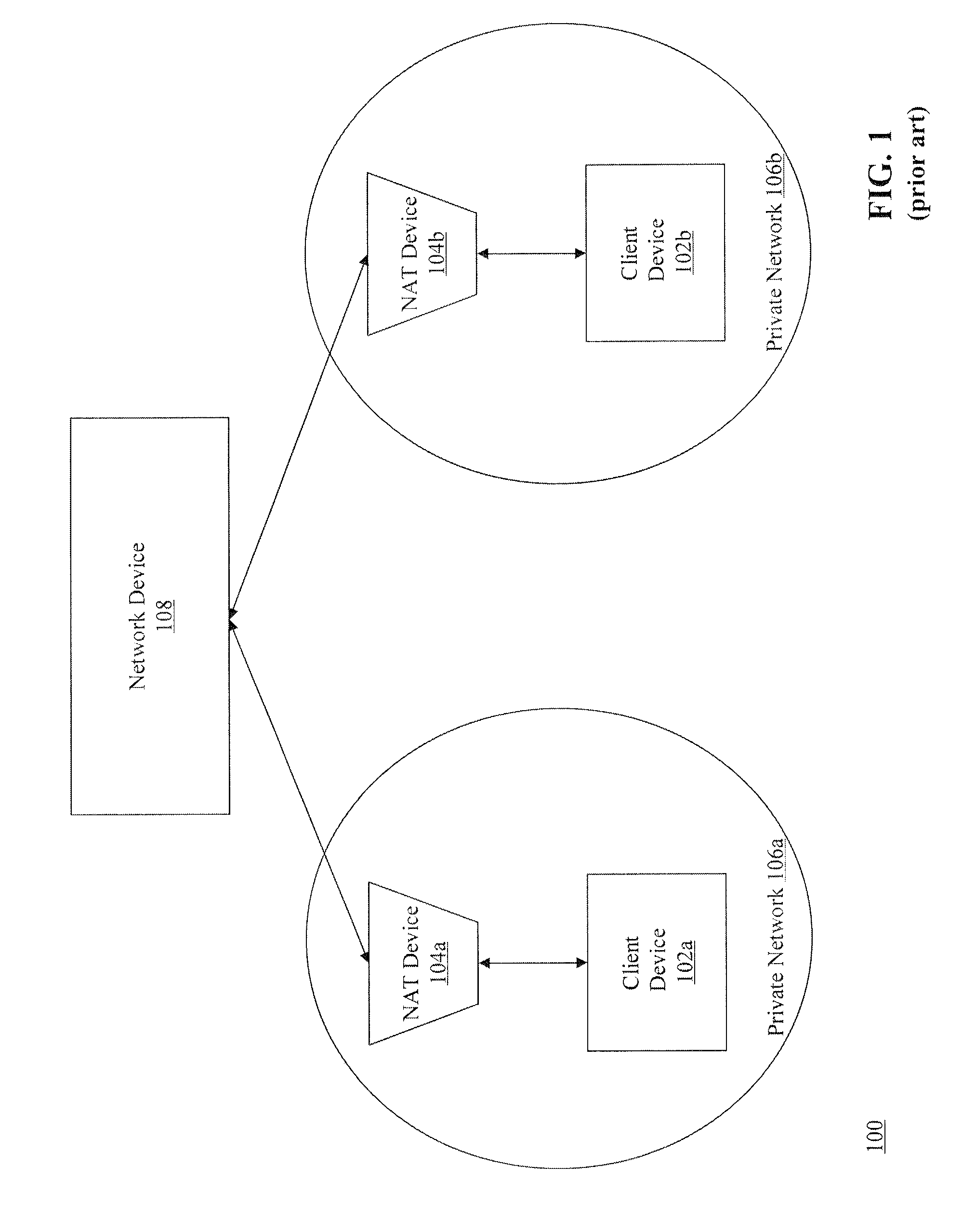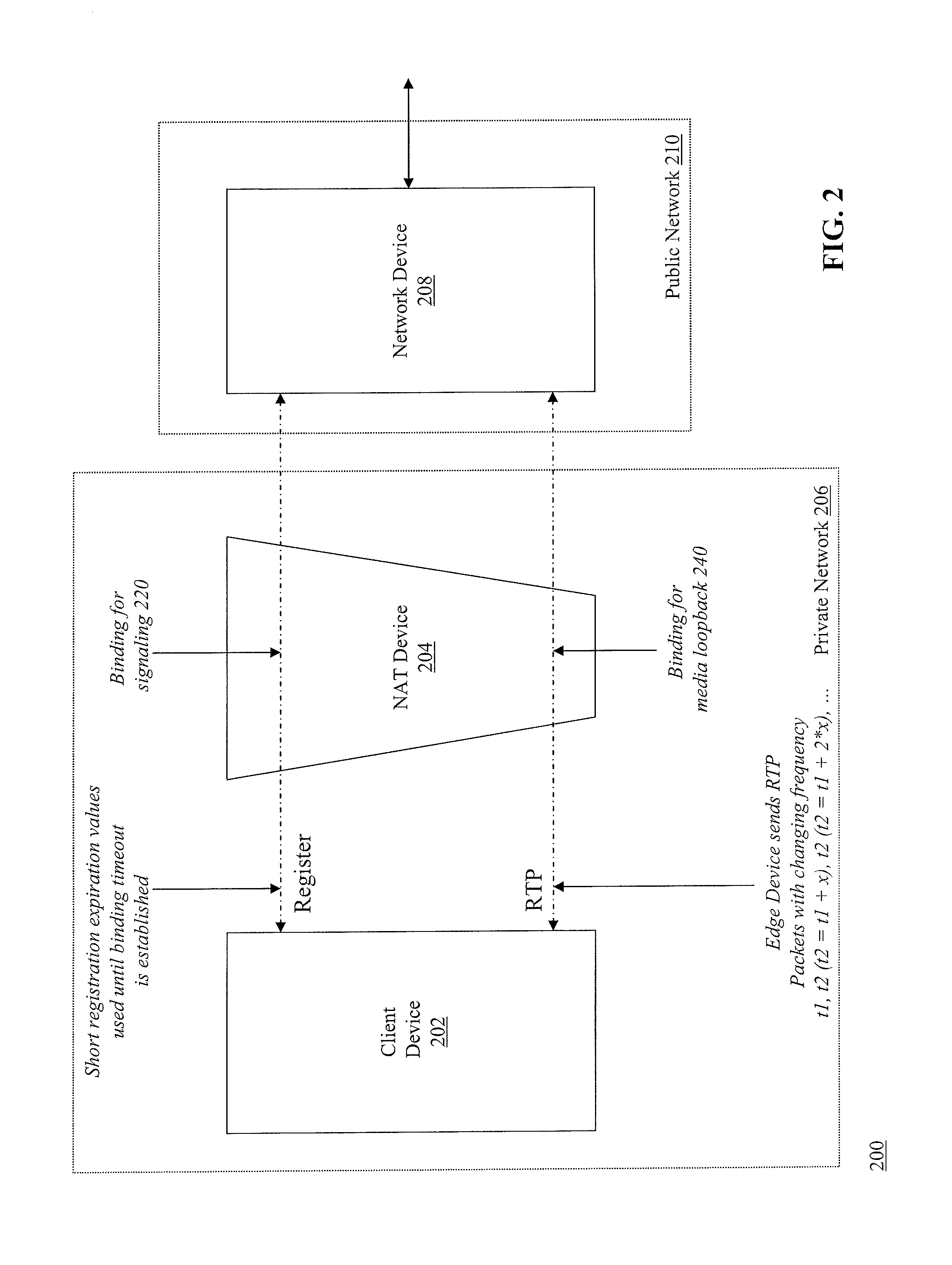Determining expiration time of bindings for network address translation devices
- Summary
- Abstract
- Description
- Claims
- Application Information
AI Technical Summary
Benefits of technology
Problems solved by technology
Method used
Image
Examples
Embodiment Construction
[0047]FIG. 2 is a block diagram of a system 200 for determining expiration time of bindings for NAT devices. The system 200 includes a client device 202 and a NAT device 204 located within a private network 206. The system 200 further includes a network device 208 located in a public network 210. Although FIG. 2 shows network device 208 in public network 201, it should be understood that other architectures and network configurations may be employed. For example, network device 208 can be located within private network 208. In this example, network device 208 can be an edge device, such as a session border controller (SBC), which connects to other devices (not shown) in an external public network (e.g., the Internet). One of ordinary skill in the art will understand that the techniques described herein can be implemented on many different server types, network configurations, and / or computing devices without departing from the spirit or scope of the invention.
[0048]The client device...
PUM
 Login to View More
Login to View More Abstract
Description
Claims
Application Information
 Login to View More
Login to View More - R&D
- Intellectual Property
- Life Sciences
- Materials
- Tech Scout
- Unparalleled Data Quality
- Higher Quality Content
- 60% Fewer Hallucinations
Browse by: Latest US Patents, China's latest patents, Technical Efficacy Thesaurus, Application Domain, Technology Topic, Popular Technical Reports.
© 2025 PatSnap. All rights reserved.Legal|Privacy policy|Modern Slavery Act Transparency Statement|Sitemap|About US| Contact US: help@patsnap.com



